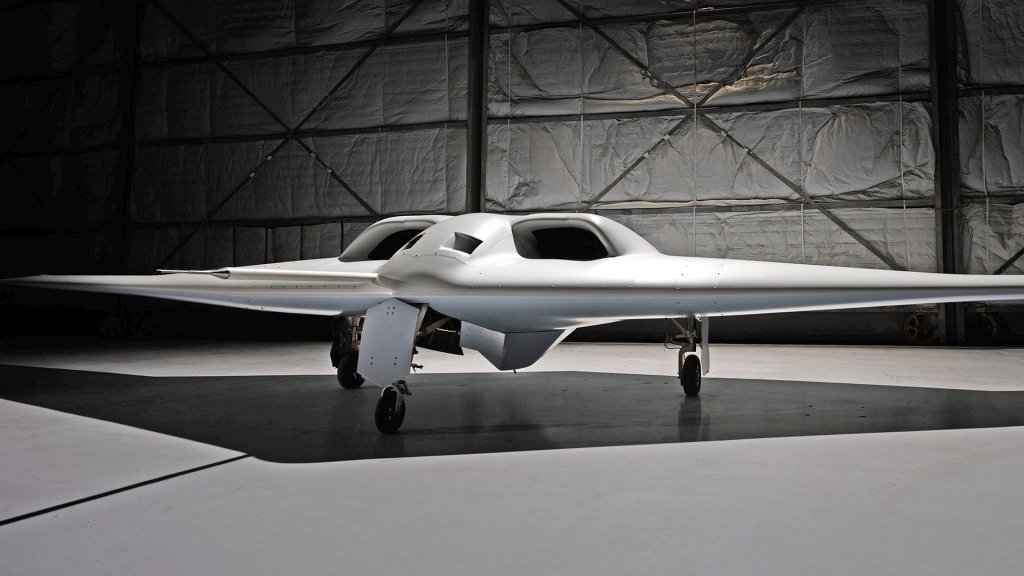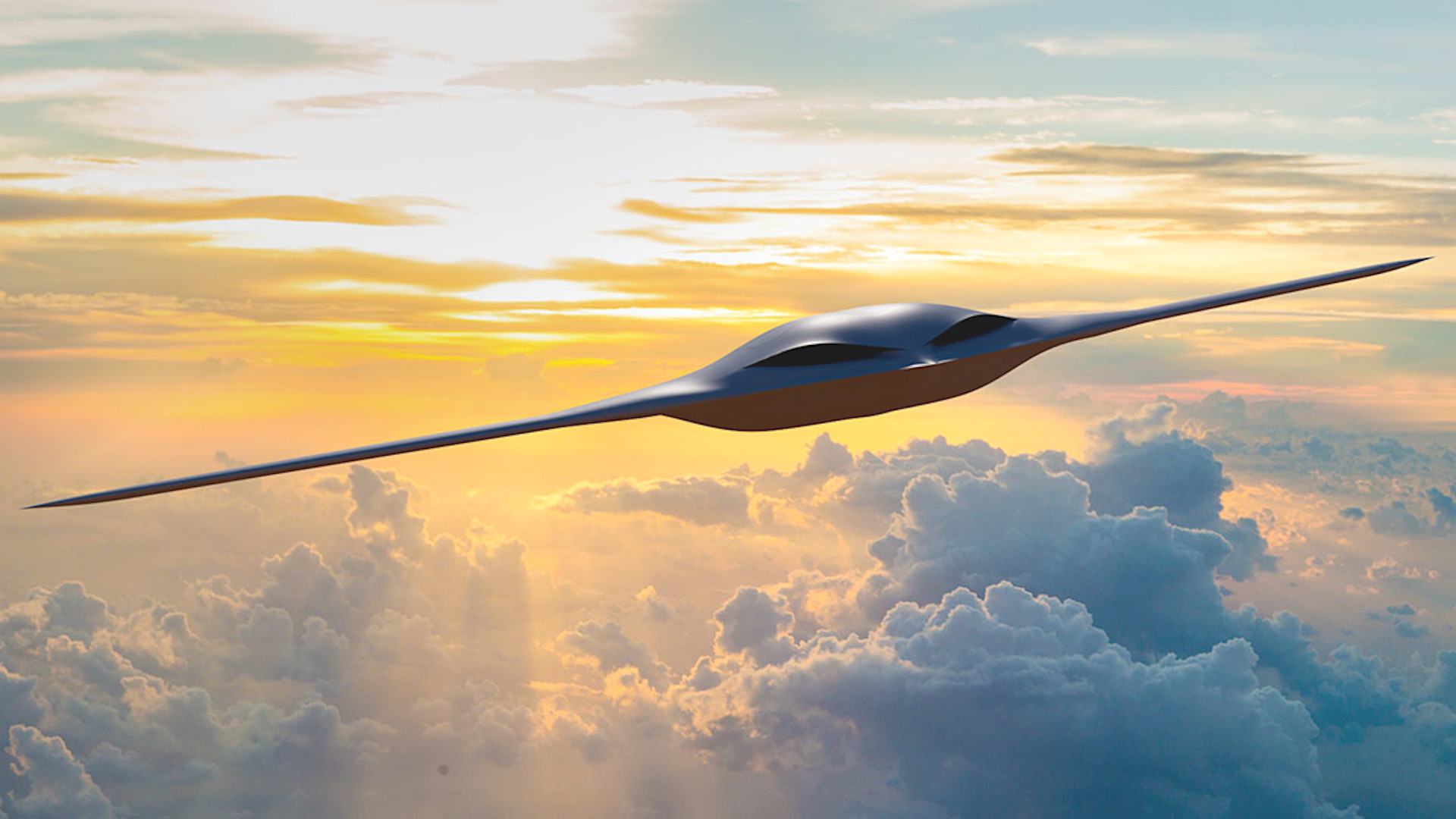The U.S. Air Force Research Laboratory (AFRL) has awarded General Atomics a contract for work on what is described as a “hybrid-electric propulsion ducted fan next-generation intelligence, surveillance, reconnaissance/strike unmanned aerial system,” or GHOST. A propulsion system of this kind can offer a very high degree of efficiency, which can translate to significant unrefueled range, as well as being very quiet. General Atomics has publicly touted work in this area in the past, tied in part to its Gambit modular drone family, which it has said could lead to a design capable of staying aloft for up to 60 hours, at least.
The Pentagon included AFRL’s GHOST award to General Atomics, a cost-plus-fixed-fee deal valued at $99,292,613, in its daily contracting notice today. The full entry reads:
“General Atomics Aeronautical Systems Inc. Poway, California, was awarded a $99,292,613 cost-plus-fixed-fee contract for hybrid-electric propulsion ducted fan next-generation intelligence, surveillance, reconnaissance/strike unmanned aerial systems (GHOST). This contract provides for the advancement of the hybrid-electric ducted fan next-generation intelligence, surveillance, reconnaissance/strike unmanned aerial systems to provide capabilities across a spectrum of contested environments. Work will be performed at Poway, California, and is expected to be completed by Aug. 26, 2028. This contract was a sole source acquisition. Fiscal 2024 research, development, test and appropriations funds in the amount of $26,867,479 are being obligated at time of award. The Air Force Research Laboratory, Wright Patterson Air Force Base, Ohio, is the contracting activity (FA2931-25-C-B035).”

Additional details about the GHOST effort, including what plans there might be now to operationalize what the program produces, are scant. TWZ has reached out to AFRL for more information.
“For more than 30 years, General Atomics has advanced unmanned aerial systems in ways never before achieved and often poorly replicated,” C. Mark Brinkley, a spokesperson for General Atomics, told TWZ when asked for more details. “Satcom [satellite communications] control? Did it. Kinetic strike? That was us. Automatic takeoff and landing? That, too. Unmanned jets? We’re building our third.”
General Atomics’ third jet-powered drone, at least that it has publicly acknowledged, is the YFQ-42A under development now as part of the U.S. Air Force’s Collaborative Combat Aircraft (CCA) program. It is derived from the experimental XQ-67A drone produced for AFRL’s once-secretive Off-Board Sensing Station (OBSS) program. There is also the company’s stealthy Avenger uncrewed aircraft.


“We’ve been promising something impressive related to hybrid-electric propulsion, and now I can’t talk about it anymore,” he added. “That’s how it goes with these things. Contrary to what you see on the news, the revolution won’t be televised.”
In general, hybrid-electric propulsion systems offer improved fuel economy and other benefits by combining fuel-powered engines and electric motors. The system can be paired with batteries of various capacities to achieve its desired performance. Using ducted fans can offer additional performance and other benefits. Hybrid-electric configurations can also help reduce infrared and acoustic signatures on top of other low-observable (stealthy) design features.
As noted, General Atomics has been very open in the past about its work on hybrid-electric propulsion involving ducted fans for future stealthy long-endurance drones.
“We are working on hybrid electric propulsion,” Mike Atwood, then-senior director of Advanced Programs at General Atomics Aeronautical Systems, Inc. (GA-ASI), told Breaking Defense in 2022. “We believe that GA is going to pioneer a completely new way to propel airborne air-breathing [vehicles]. That will be unveiled in the coming years, but it is a completely disruptive technology. It uses a hybrid electric system where it’s basically a Tesla Model S and an RQ-170 got together and you have a fully electric aircraft.”
Atwood has since become GA-ASI’s vice president for Advanced Programs.

At that time, General Atomics had presented a notional concept for a stealthy flying wing-type drone, referred to as MQ-Next, and pitched it as a potential successor to the company’s still-popular MQ-9. Two years earlier, the Air Force, the largest known operator of MQ-9s, had announced its desire to stop buying those drones largely over concerns about their vulnerability in future high-end fights, especially one against China in the Pacific. The service has continued to receive additional representatives since then.
“The key to this design is [a] heavy fuel engine, driving very efficient generators and motors. And that way we can get fairly low [fan] speeds, get really good efficiency,” Dave Alexander, GA-ASI’s president, also told Breaking Defense in 2022. “So, this is [a] game changer right here. This is a low-pressure ratio fan, so it’s a little tricky and we got to be careful with it. But we believe once we nail this, get the thrust out of it and installed weight, then that’ll drive that aircraft [to new lengths].”
Breaking Defense‘s report added that Alexander had talked about a 60-hour endurance for the MQ-Next concept and described it as particularly well suited for persistent long-range intelligence, surveillance, and reconnaissance (ISR) missions over the hotly contested South China Sea. He also talked about a goal being for the drone to be able to operate from a 3,000-foot-long rough runway in alignment with the Air Force’s Agile Combat Employment (ACE) expeditionary and distributed concepts of operations.

Last year, Alexander again highlighted General Atomics’ work on hybrid-electric propulsion systems utilizing ducted fans in an interview with Aviation Week on the sidelines of the annual Royal International Air Tattoo in the United Kingdom. At that time, he also directly linked these developments to the Gambit family of modular drones, and the Gambit 4 design in particular.
General Atomics has presented a variety of very different potential Gambit drones, but they are all designed around a common ‘chassis’ that includes landing gear, as well as key mission and flight control computer systems. To date, Gambit 4 has been consistently depicted as a stealthy flying wing-type design intended for long-endurance persistent ISR missions that is fully in line with the MQ-Next concept General Atomics had previously shown, as seen in the video below.

“That part of the Gambit series is still out there and we want to make sure we don’t lose sight of that,” Alexander said. “It’s very unique.”
“Heavy Fuel Engine 2.0 in development for the MQ-1C Block 25 is not the basis for Gambit 4’s hybrid propulsion system, Alexander said,” Aviation Week‘s report added. “A different diesel engine with eight cylinders will be developed to generate the power for the electric motors in Gambit 4.”

Without knowing more about the work General Atomics is now doing for AFRL as part of GHOST, it is hard to say specifically what kinds of operational tasks the resulting drone might be capable of performing. However, in previous reporting about broadly similar designs, TWZ has highlighted the value that a stealthy, ultra-quiet drone with significant range and endurance could offer for conducting ISR missions, and doing so covertly, in denied areas.
The GHOST contract announcement also mentions the potential for the drones to be capable of performing strike missions. The ability to immediately prosecute at least some targets of opportunity would be another major benefit of this kind of uncrewed aircraft.
Northrop Grumman subsidiary Scaled Composites is currently working on a different highly efficient and whisper-quiet hybrid-electric flying wing-type drone called the XRQ-73 as part of a Defense Advanced Research Projects Agency (DARPA) program called the Series Hybrid Electric Propulsion AiRcraft Demonstration (SHEPARD). DARPA has been running SHEPARD in cooperation with AFRL, as well as the Office of Naval Research, since 2021.

The XRQ-73 design is also a direct outgrowth of the XRQ-72A that Scaled Composites developed for a previous effort called Great Horned Owl (GHO), which the U.S. Intelligence Community’s Intelligence Advanced Research Projects Activity (IARPA) ran from the early 2000s until sometime in the 2010s. AFRL was also involved in GHO. TWZ was the first to report in detail on the XRQ-72A, which featured a hybrid-electric propulsion system with ducted fan propulsors.

The U.S. military and U.S. intelligence community have a long history of work on ultra-quiet crewed and uncrewed aircraft dating back to the height of the Cold War, and additional relevant developments could well be underway now in the classified realm.
It’s also worth noting here that the GHOST contract comes amid renewed concerns about the MQ-9’s vulnerability even to lower-tier threats following a spate of losses to Iranian-backed Houthi militants in Yemen in the past year or so.
With General Atomics now on contract with AFRL for GHOST, it remains to be seen whether more details about that specific effort begin to emerge.
Contact the author: joe@twz.com
